With some 30,000 works, the Cabinet d’Arts Graphiques is the largest part of the Petit Palais collection. Yet the Musée des Beaux-Arts de la Ville de Paris is better known for its paintings than its prints. The reason is simple: for conservation reasons, a print that is exhibited for 3 months must then spend 3 years in the dark! The fragility of these works means that they cannot be displayed over a long period of time, making them less visible.
To raise awareness of this collection and the art of printmaking, the Petit Palais is currently presenting a remarkable exhibition. Until 14 January 2024, Treasures in Black & White invites us to (re)discover some of the museum’s finest works. It is also an opportunity to better understand how the Petit Palais collection was built up, and to pay tribute to its donors.
Article produced in collaboration with the Petit Palais
Summary
Masterpieces from the Dutuit collection
Treasures in Black & White presents the “crème de la crème” of the museum’s prints, starting with a selection of the finest sheets from the Dutuit collection, which was behind the creation of the Petit Palais.
The Petit Palais becomes a major museum
Let’s go back in time: we are in 1900, in the middle of the Universal Exhibition. The Petit Palais was a building that had just been erected, along with the Alexandre III Bridge and the Grand Palais. At the end of the Universal Exhibition, the question arose as to the future of the building: should it be preserved or destroyed?
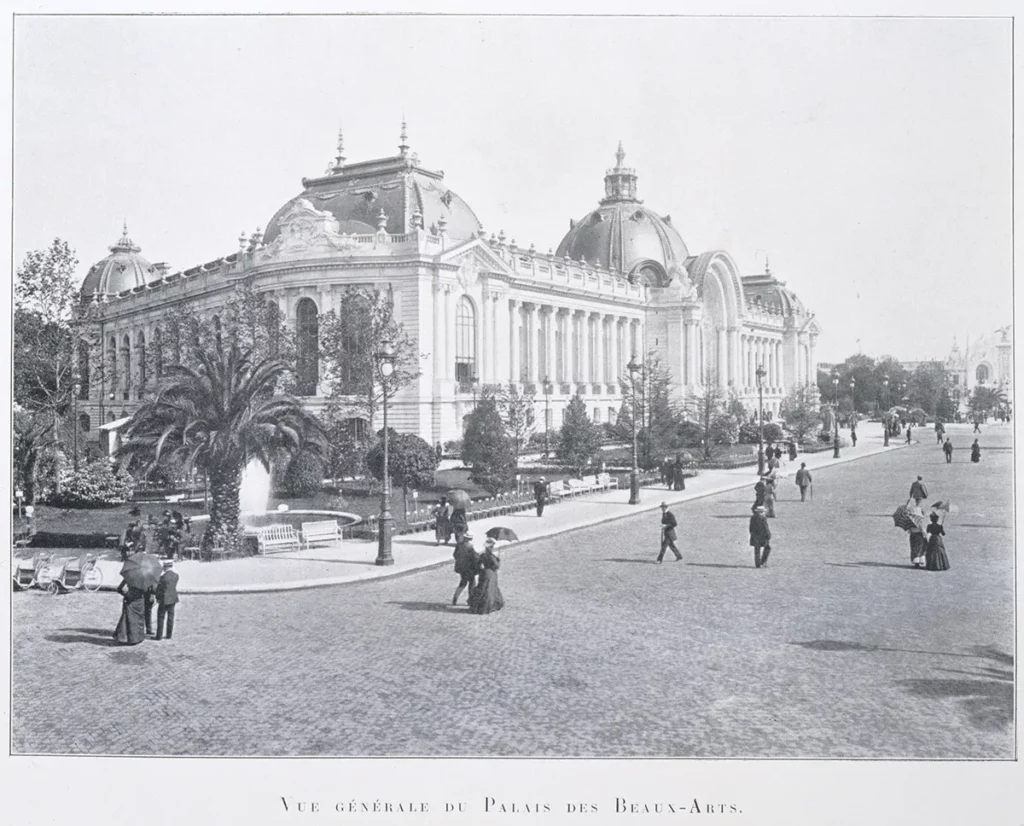
Since 1870, the City of Paris has had a collection of works, made up of commissions and purchases, and sees the Petit Palais as an ideal setting in which to present this collection to the public. In 1902, the city also received the bequest of the collection belonging to the brothers Auguste and Eugène Dutuit and their sister Héloïse. This bequest marked a real turning point in the history of the museum: with 20,000 works of art, it gave the Petit Palais an unprecedented expansion and precipitated its opening. The museum was inaugurated on 11 December 1902.
Heirs to an immense family fortune from the textile industry, the Dutuit brothers Eugène (1807-1886) and Auguste (1812-1902) were great art lovers who spent lavishly to enrich their collections. While Auguste had a passion for antique art, Eugène was a recognised expert in the fields of engraving and bibliophily.
Having surrounded himself with trusted dealers, Eugène Dutuit built up a sharp eye and formidable knowledge over the years. His collection was unprecedented : he managed to assemble the complete works of certain artists (Albrecht Dürer, Martin Schongauer, Lucas de Leyde) and more than 350 etchings by Rembrandt!
Artwork under the microscope: The Hundred Guilders Coin
This etching by Rembrandt depicts Jesus healing the sick. It therefore owes its name not to what it depicts, but to the fact that Rembrandt exchanged it for several pieces by the engraver Marc-Antoine Raimondi, for a total value of one hundred florins.
Eugène Dutuit paid 27,500 francs for this work, a colossal sum: the equivalent of 14 years’ work for a Parisian labourer!
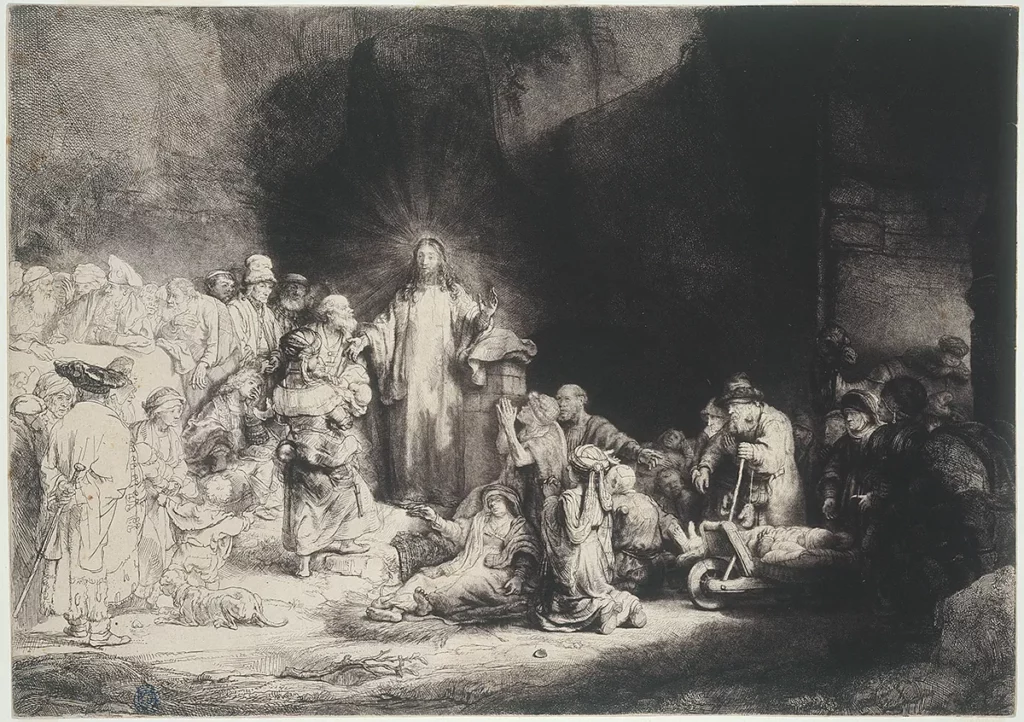
However, the Dutuit brothers did not set out to collect for their own pleasure. Auguste’s will states that their aim was to “create an institution useful to the public”. To this end, they lent their works to numerous exhibitions and organised one in 1869 at the Palais de l’Industrie. During their lifetime, they also donated several hundred works to the Rouen municipal library, culminating in their bequest to the city of Paris.
Dürer, Callot, Rembrandt, Goya: 4 representative figures from the Dutuit collection
The tour of the Treasures in Black & White exhibition gives an idea of the importance of this legacy by presenting the work of 4 artists particularly represented in the Dutuit collection:
- Albrecht Dürer (1471-1528), whose engraved works Eugène Dutuit had succeeded in collecting almost in their entirety;
- Jacques Callot (1592-1635) was considered to be the successor of Dürer and the predecessor of Rembrandt;
- Rembrandt (1606-1669), for whom Dutuit had a passion, bringing together 350 prints by the artist;
- Dutuit owned aquatint prints of Goya , which also testify to his interest in the artist’s creative process.
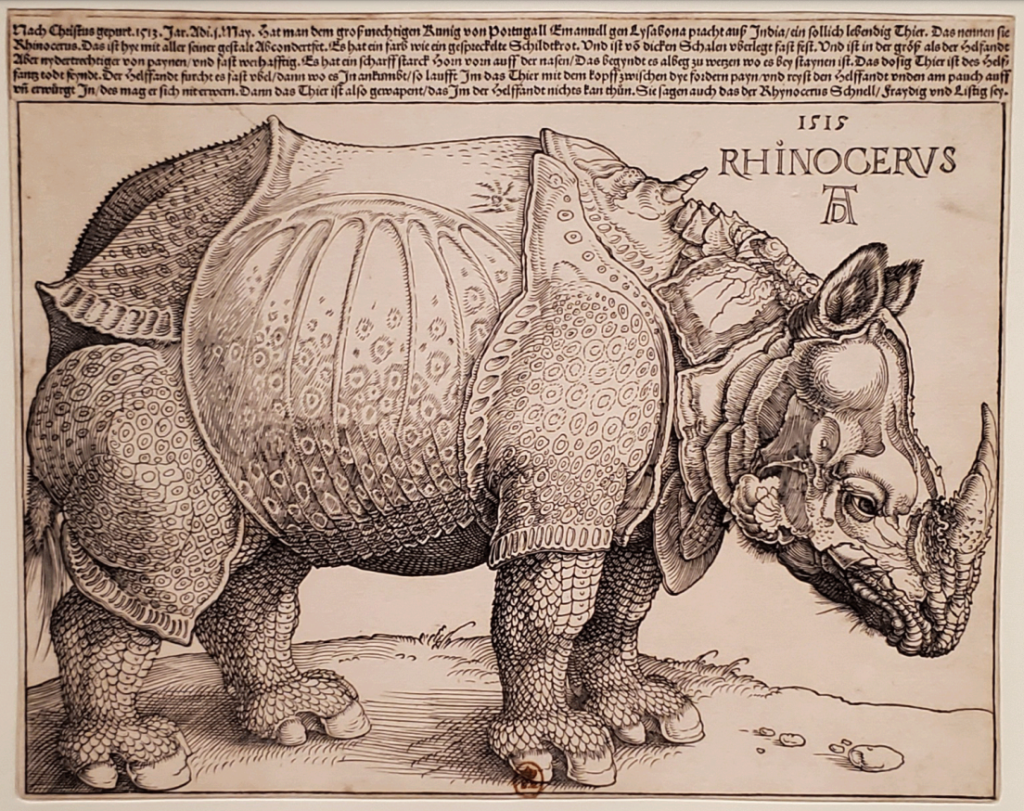
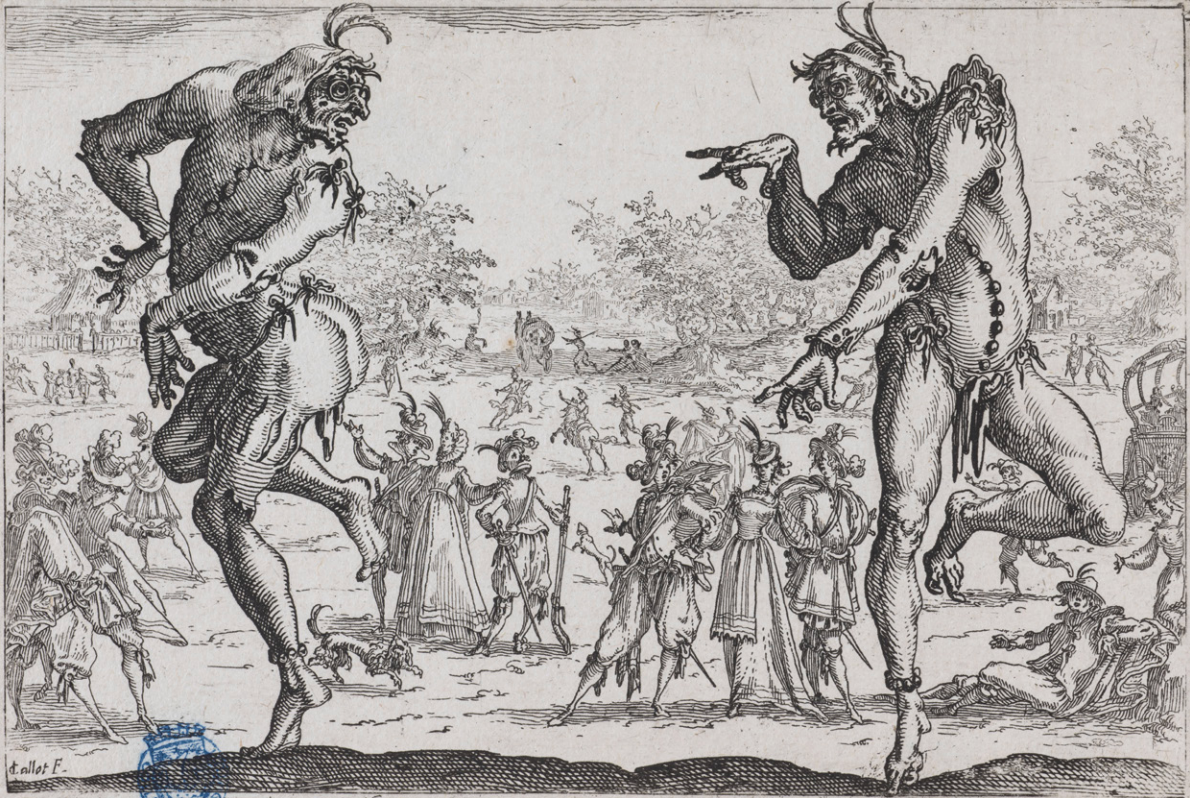
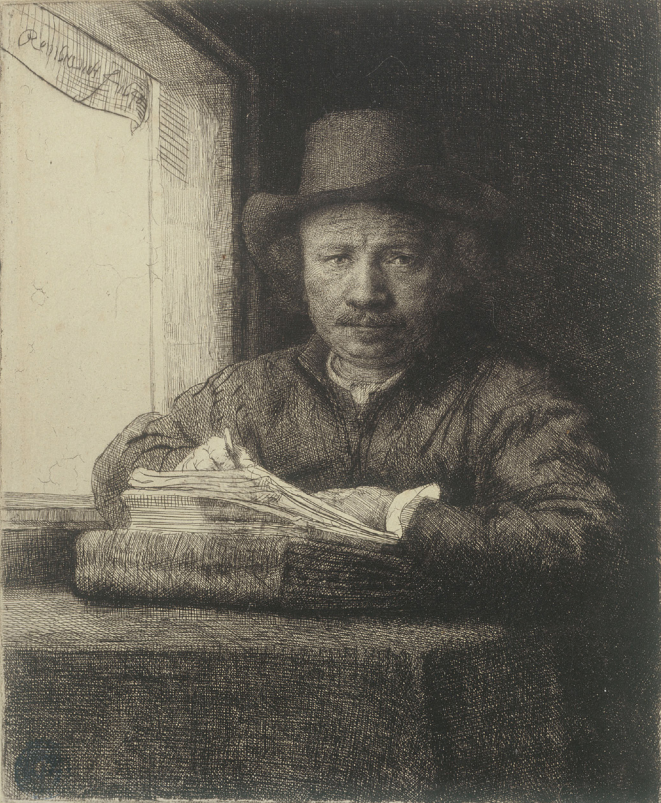
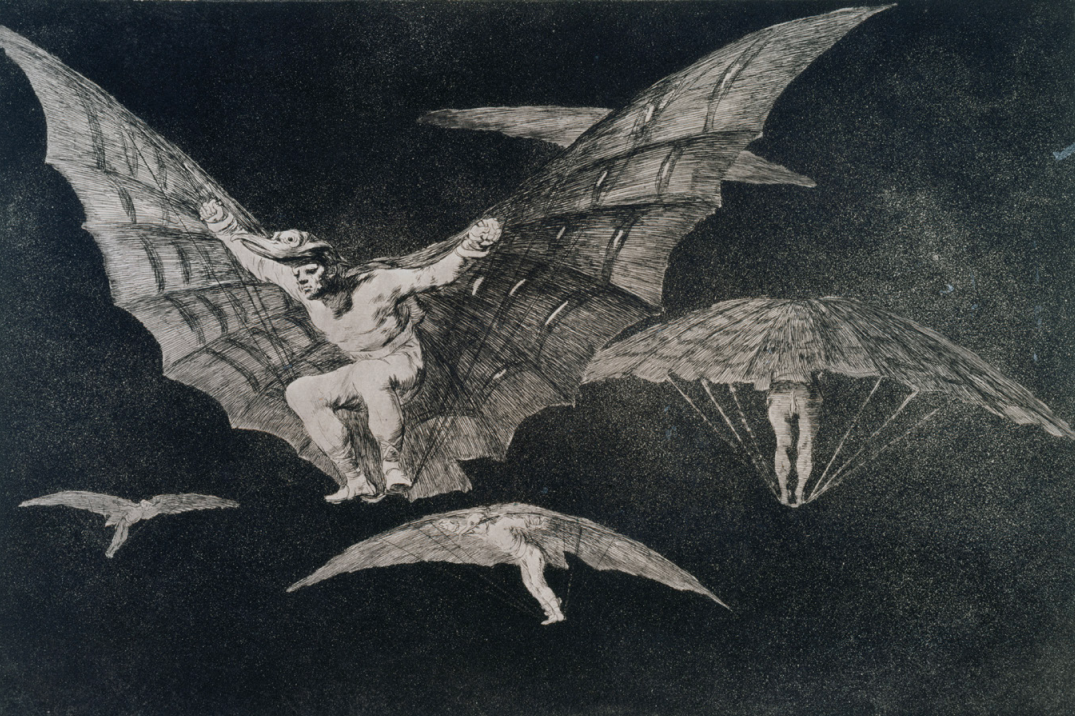
In addition to these prints, the Dutuit collection also included antique ceramics and bronzes, works of art from the Middle Ages, the Renaissance and the 17th century, Flemish and Dutch paintings and rare books. This major bequest enabled the Petit Palais to become a general museum covering most of the major trends in the history of European art, from Antiquity to the early 20th century.
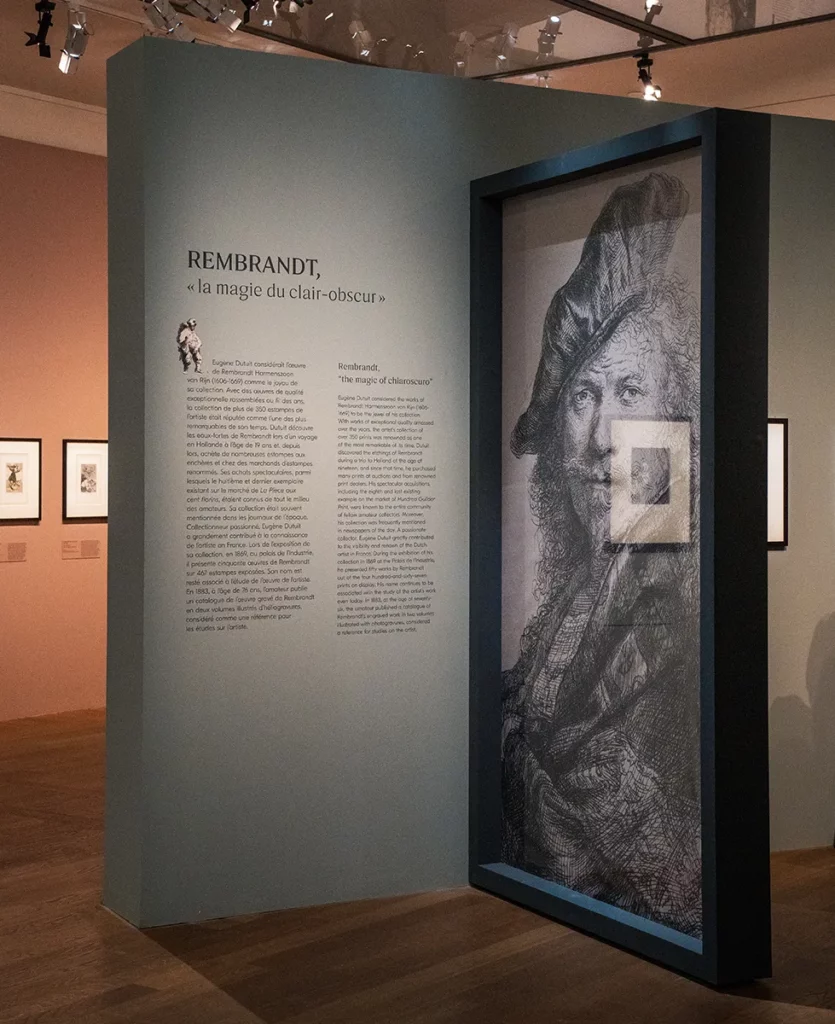
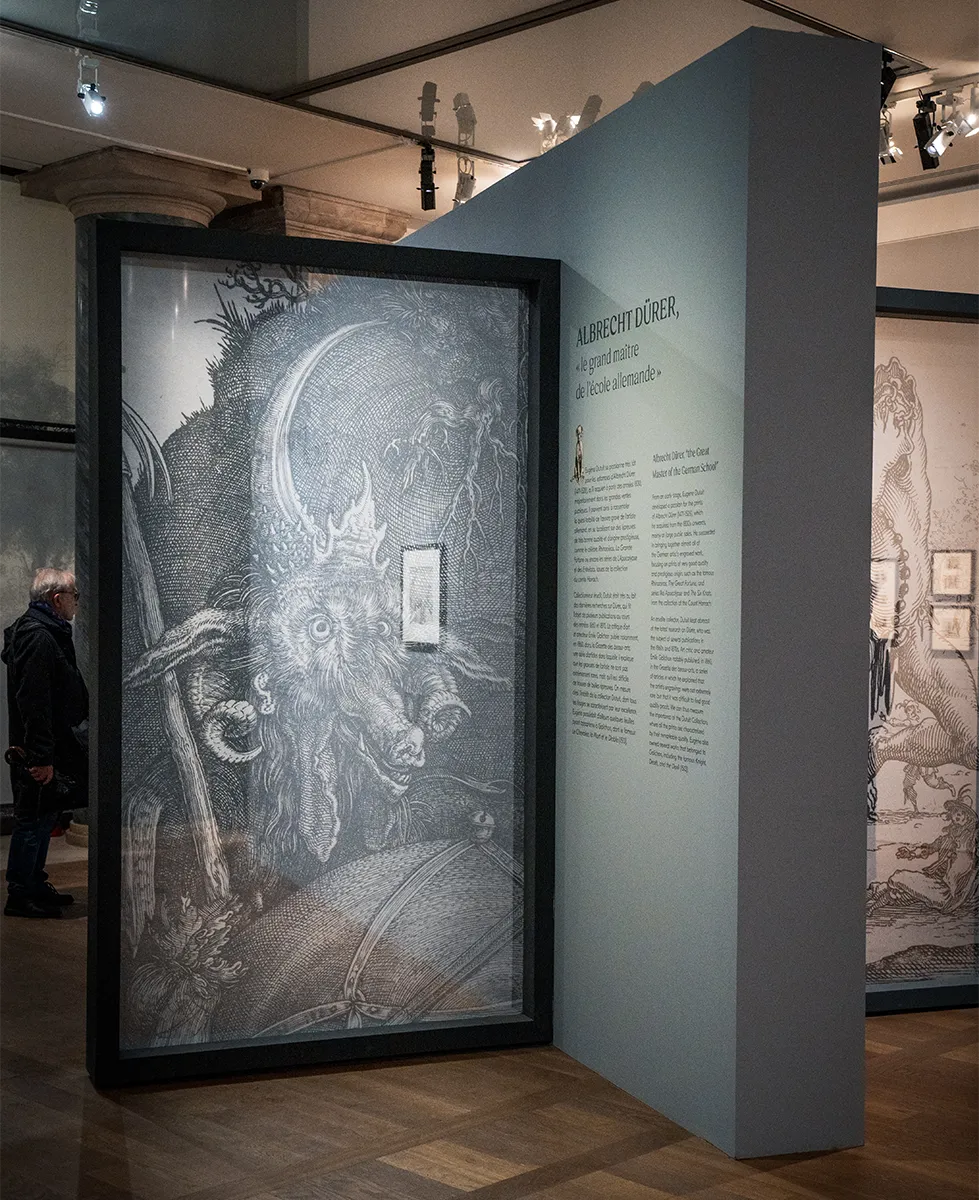
Henry Lapauze’s master stroke in creating a modern collection
Henry Lapauze (1867-1925) was curator at the Petit Palais from 1903, then director of the museum in 1905. Thanks to the Dutuit bequest, he found himself at the head of a museum with a formidable collection of prints. But Henry Lapauze wanted to think bigger, and set his sights on opening a Musée de l’Estampe Moderne to present a contemporary counterpart to the Dutuit collection.
He then launched a vast collection drive among collectors, artists, rights holders, art dealers and publishers, which proved a great success: in just 6 months he managed to collect 3,000 prints.
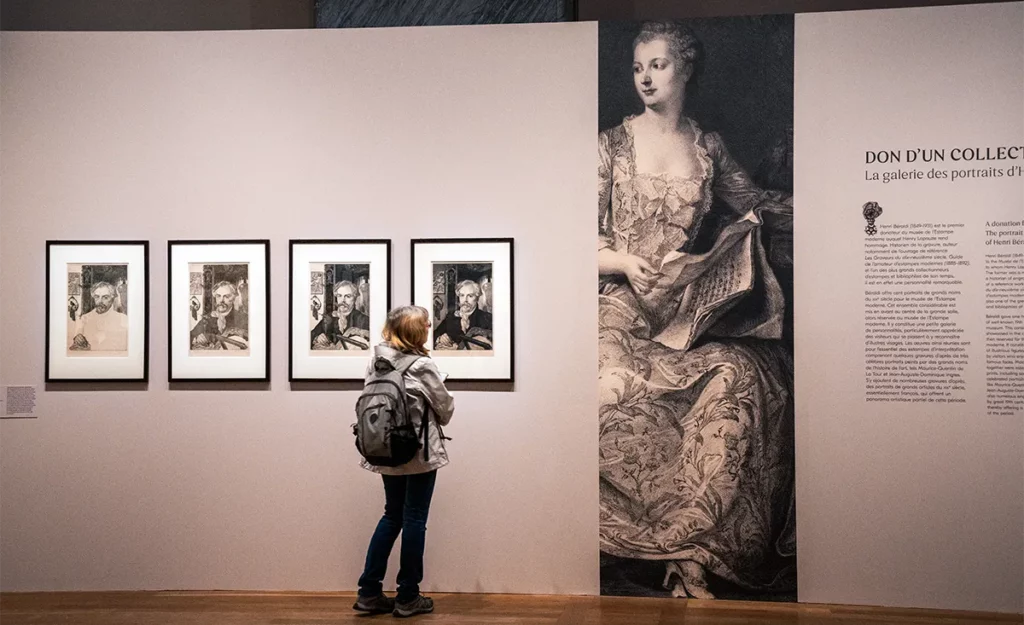
The second part of the exhibition presents a selection of prints collected by Henry Lapauze and exhibited in 1908 in the Musée de l’Estampe Moderne. A number of great artists are represented, including Henri de Toulouse-Lautrec, Jules Chéret and Edgar Chahine.

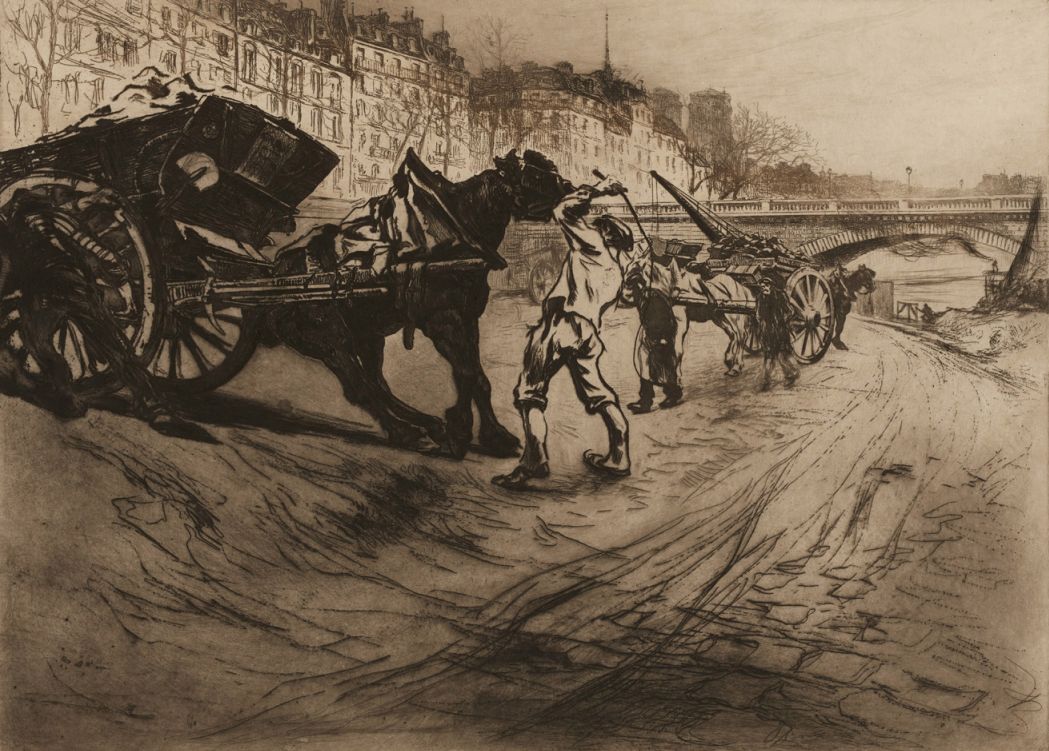
Artwork under the microscope: Village street in the snow at sunset
Printmaking is not just a world of black and white, and the exhibition closes with a small selection of works in colour, such as this magnificent etching from the first quarter of the 20th century by Johannes-Martin Grimelund, depicting a snowy landscape. The technique used here is ‘doll inking’, in which several coloured inks are applied to the same matrix, giving a sumptuous pastel effect.
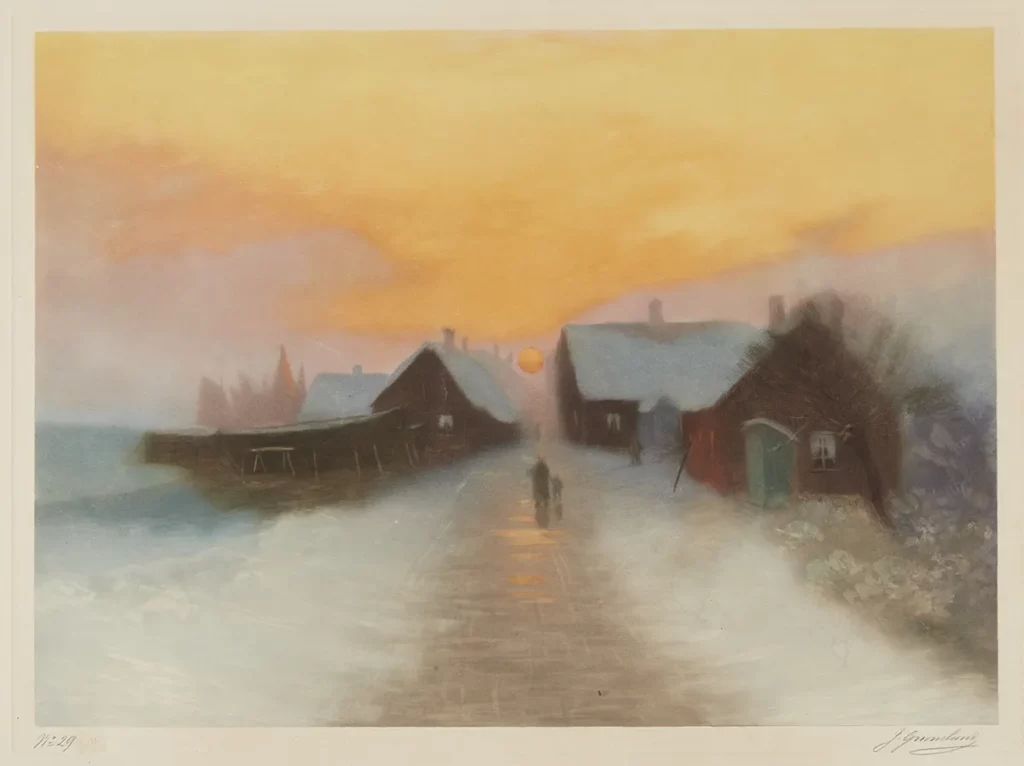
Understanding printmaking techniques
Throughout the exhibition, there are desks where you can explore the different techniques used to create a print: wood engraving, etching, burin, lithography, coloured etching… all these processes will hold no secrets for you!
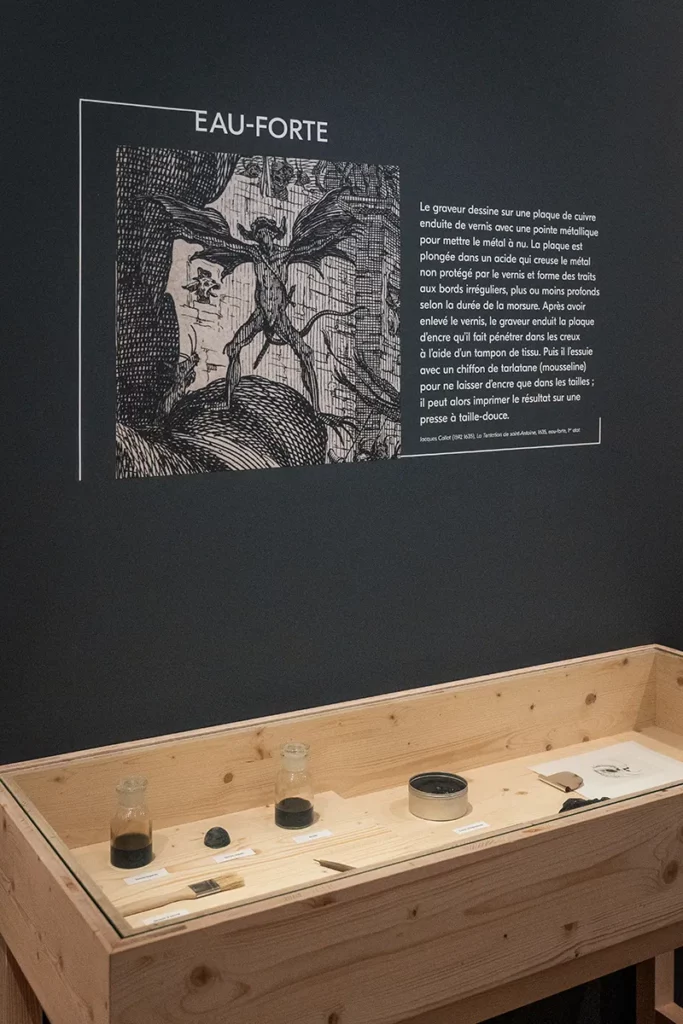
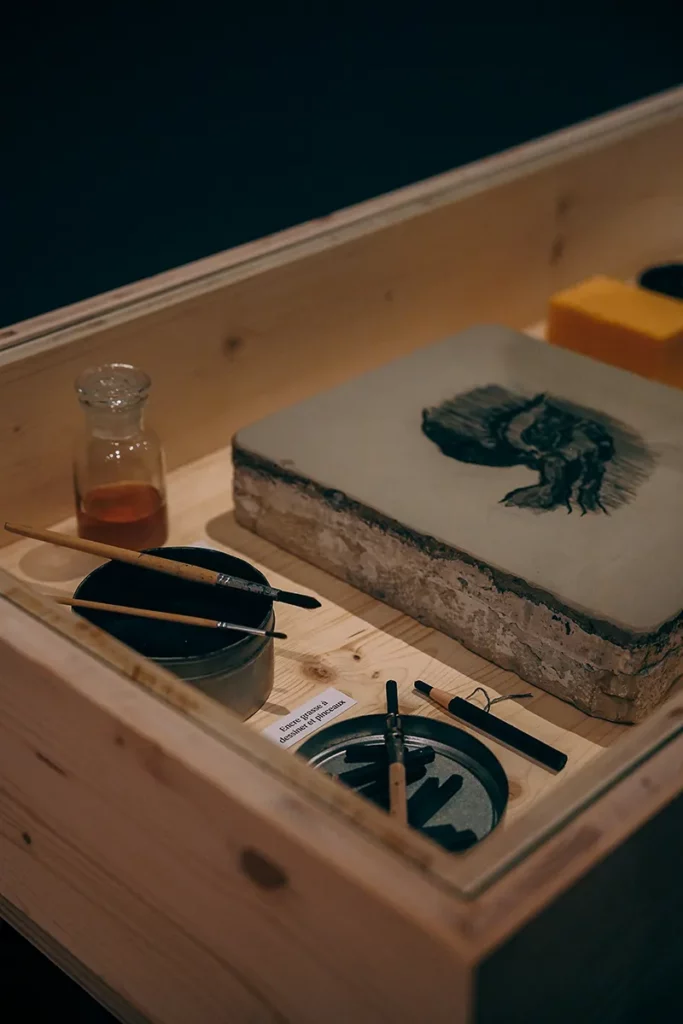
And in the last room, an interactive device lets you create your own digital etching.
A collection that continues to grow
While the Dutuit bequest and the Henry Lapauze collection were the two founding events of the Petit Palais print collection, over the years other donations, bequests and purchases have helped to enrich it. Over the last ten years, almost 1,300 new prints have joined the museum’s collections. Some of these latest acquisitions can be seen at the very end of the exhibition.
Printmaking is child’s play!
Younger visitors are invited to go on a treasure hunt through the exhibition, looking for amusing details hidden in the prints on display.
Around the exhibition
The exhibition is accompanied by a rich programme of events:
- guided tours are organised on Tuesdays and Fridays at 12.15pm (€7 + ticket price)
- free lectures, subject to availability, in the museum auditorium
- Workshops are held several times a week to introduce visitors to the art of printmaking.
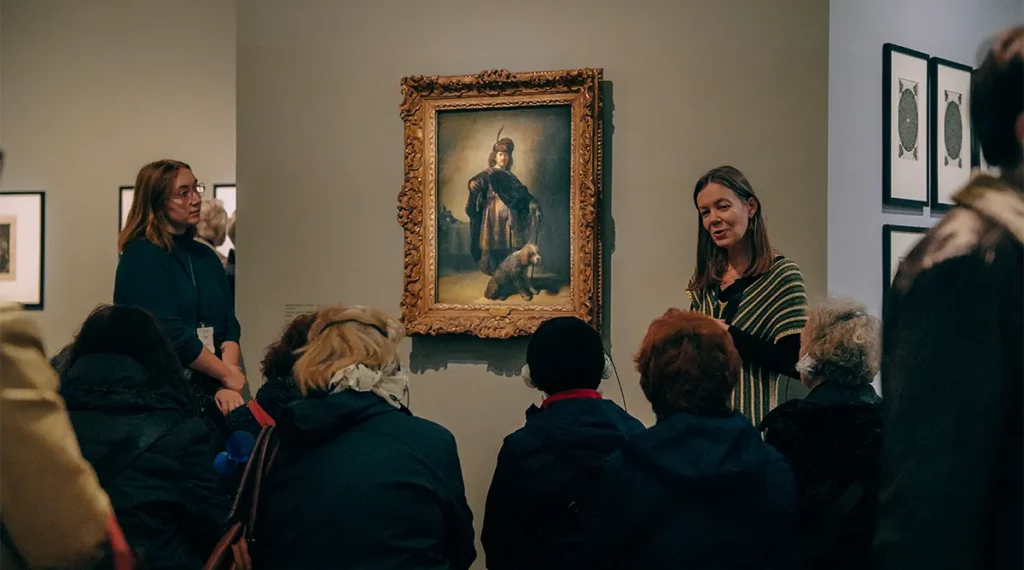
Useful information
Address :
Petit Palais
Avenue Winston Churchill
75008 Paris
Opening times :
Until 14 January 2024
Every day, except Mondays, from 10 am to 6 pm
Late-night opening on Fridays and Saturdays until 8pm
Website :
https://www.petitpalais.paris.fr/
Prices :
Full price: €12
Reduced rate : 10 €
Article produced in collaboration with the Petit Palais
Thanks to Anne-Charlotte Cathelineau, Joëlle Raineau and Clara Roca, the exhibition curators, for their rich and fascinating explanations, and to Chloé Rocher and Monique Braghini-Bouscasse.





No Comments
Leave a comment Cancel